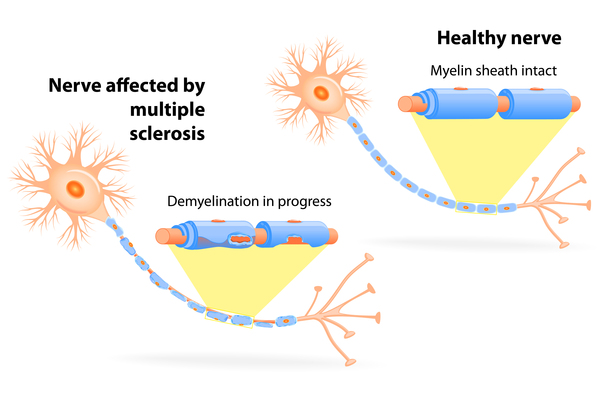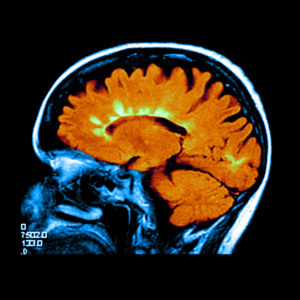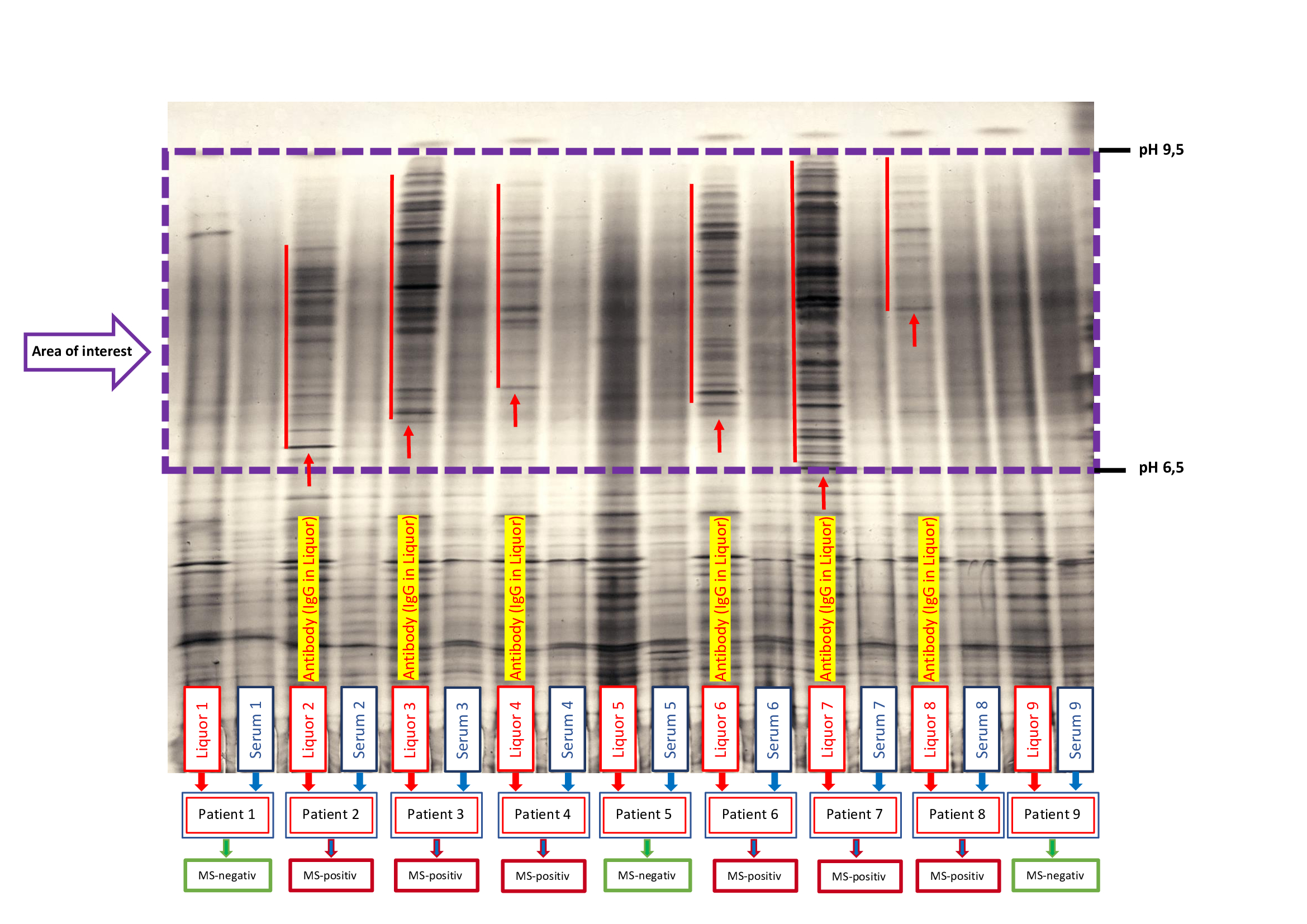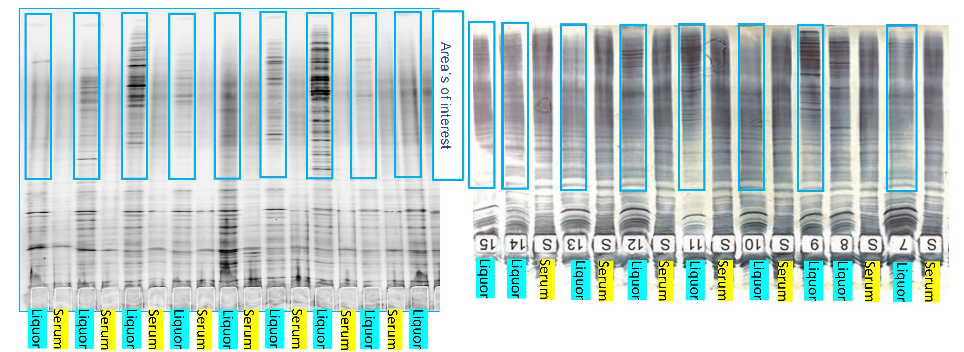Hydrophobic interaction isoelectric focusing (HIEF) of immunoglobulins (IgG)
in the pathological cerebrospinal fluid (CSF)
With our new Matrix ProPhyl Air, it is now possible to recognize the slightest signs of immunoglobulins (IgG) and to start suitable MS therapies immediately.
HIEF gel with positive and negative cerebrospinal fluid in the diagnosis of MS. The yellow bars in the illustration are liquors with a high IgG content (OCB’s) and can clearly be traced back to an intrathecal IgG synthesis.
Isoelectric focusing (IEF) is the most sensitive and specific method of detecting a intrathecal IgG production. In the isoelectric focusing it is a high-voltage electrophoresis with selective representation the IgG region. The CSF / serum pair of a patient is applied next to each other and the number of protein bands compared with each other. Selective bands in the CSF correspond to an intrathecal immunoglobulin synthesis

for the provision of MS samples and the support
from the German Cancer Research Center Heidelberg
CSF examination service
Free examination of sample material (CSF) with the condition that an anamnesis (potentially medically relevant information) is provided.
Contact information: m.demharter@protec-biosep.de
What is Multiple Sclerosis?
Multiple sclerosis (MS) is a neuroinflammatory disease that affects myelin, a substance that makes up the membrane (called the myelin sheath) that wraps around nerve fibers (axons). Myelinated axons are commonly called white matter. Researchers have learned that MS also damages the nerve cell bodies, which are found in the brain’s gray matter, as well as the axons themselves in the brain, spinal cord, and optic nerve (the nerve that transmits visual information from the eye to the brain). As the disease progresses, the brain’s cortex shrinks (cortical atrophy).
The term multiple sclerosis refers to the distinctive areas of scar tissue (sclerosis or plaques) that are visible in the white matter of people who have MS. Plaques can be as small as a pinhead or as large as the size of a golf ball.

The ultimate cause of MS is damage to myelin, nerve fibers, and neurons in the brain and spinal cord, which together make up the central nervous system (CNS). But how that happens, and why, are questions that challenge researchers. Evidence appears to show that MS is a disease caused by genetic vulnerabilities combined with environmental factors. Although there is little doubt that the immune system contributes to the brain and spinal cord tissue destruction of MS, the exact target of the immune system attacks and which immune system cells cause the destruction isn’t fully understood. Researchers have several possible explanations for what might be going on. The immune system could be:
fighting some kind of infectious agent (for example, a virus) that has components which mimic components of the brain (molecular mimickry), destroying brain cells because they are unhealthy
mistakenly identifying normal brain cells as foreign.
The last possibility has been the favored explanation for many years. Research now suggests that the first two activities might also play a role in the development of MS. There is a special barrier, called the blood-brain barrier, which separates the brain and spinal cord from the immune system. If there is a break in the barrier, it exposes the brain to the immune system for the first time. When this happens, the immune system may misinterpret the brain as “foreign.”

Early Multiple Sclerosis (MS) detection with the new HIEF-ProPhylAir technique
The foci of inflammation (figure above) clearly visible in the MRI are a sign of advanced multiple sclerosis. With the new ProPhyl HIEF technology, it would be possible to detect multiple sclerosis much earlier than shown in the figure above and to begin efficient MS therapies immediately.
The high sensitivity and specificity of this method enable faster detection of progressive and chronic MS. Research has shown that there is a greater chance of successfully slowing disease progression
if effective drugs can be administered as soon as possible after diagnosis. ProPhyl Air can thus be an important tool in improving outcomes for MS sufferers.
Comparison between ProPhyl Air and Acrylamide matrix
ProPhyl Air with Sepalyte CSF
Acrylamide matrix (supplier of precast gels)
Präsentation1 MS Analytik Stuttgart (1)
Cause of multiple sclerosis
https://www.dmsg.de/multiple-sklerose-infos/ms-verstehen/zusammenhaenge-erkennen/ursachen-der-ms/
Symptoms of multiple sclerosis
https://www.dmsg.de/multiple-sklerose-infos/ms-verstehen/vom-symptom-zur-therapie/symptome/
multiple sclerosis diagnosis
https://www.dmsg.de/multiple-sklerose-infos/ms-verstehen/vom-symptom-zur-therapie/diagnostik/




